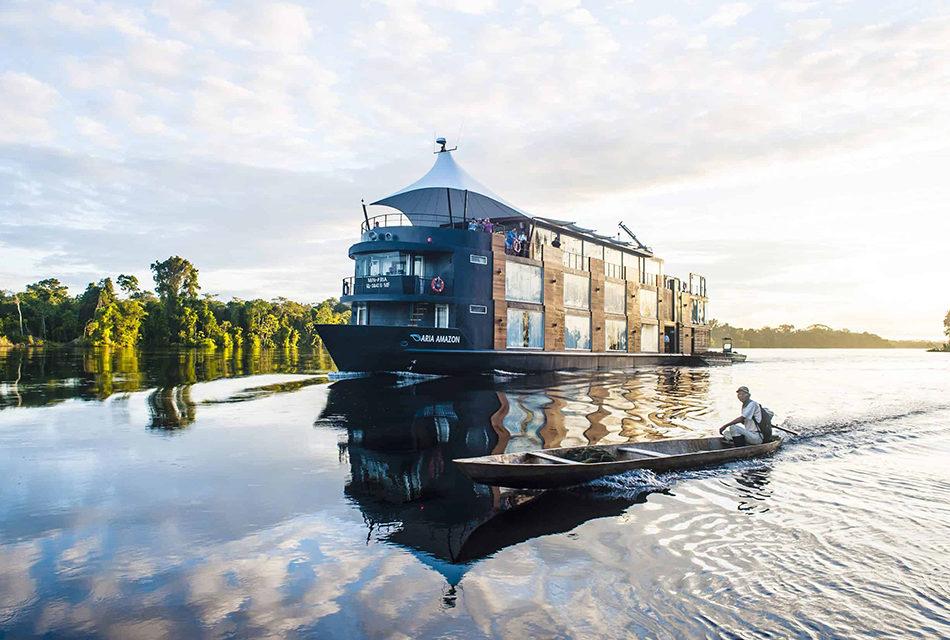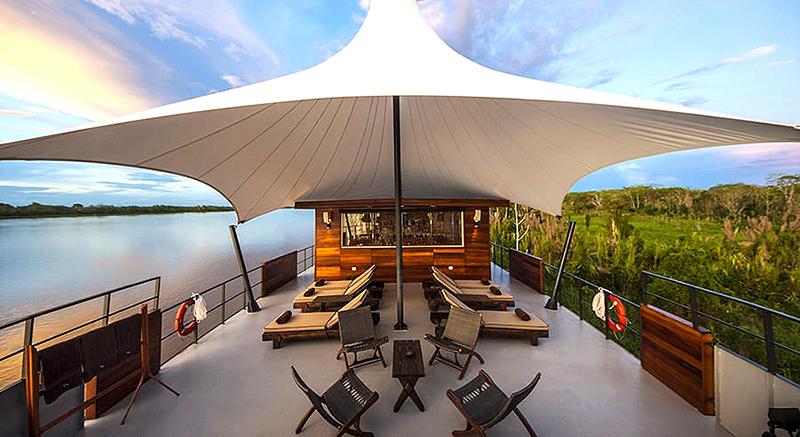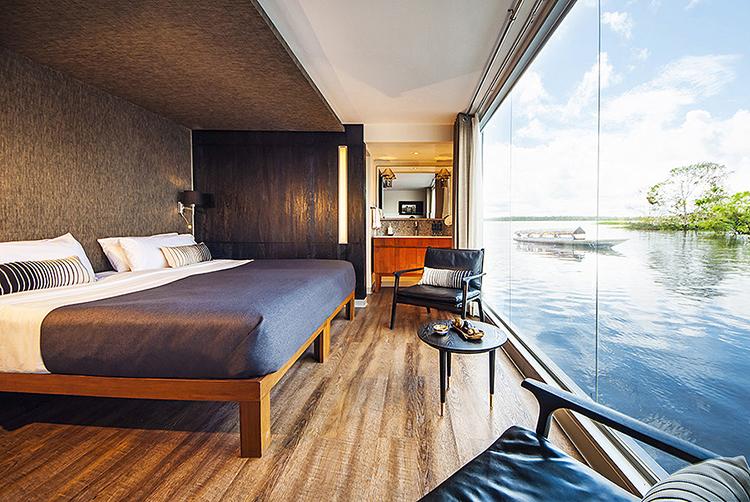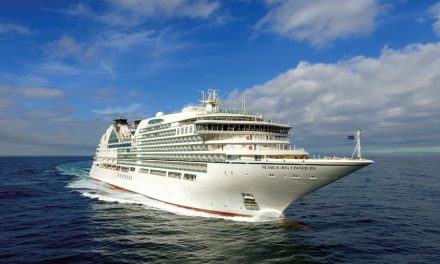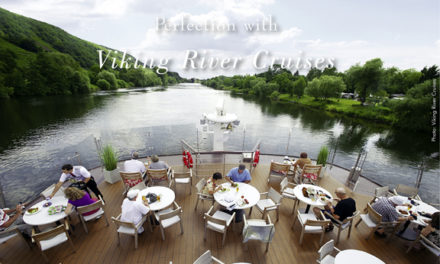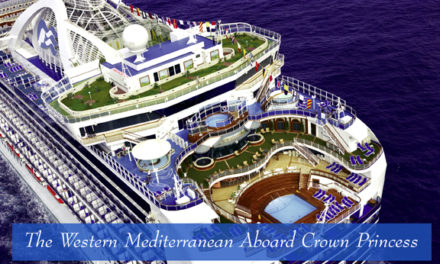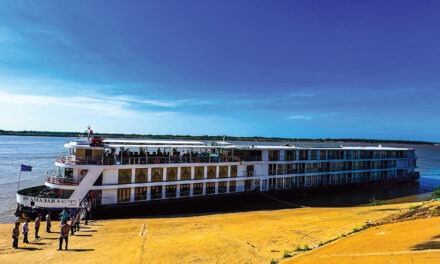Cruise
Amazing Amazon with Awe & Comfort
Article by Lisa TE Sonne, photography courtesy of Aqua Expeditions
“Today we are going to look for sloths, monkeys, toucans and bromeliads. You are not gonna like it. You are gonna love it! “ The Aqua Expeditions guide then continued the briefing, by pointing on a map to the Peruvian tributary that we were going to navigate before reaching the Amazon.
We were an international group of 32 passengers being pampered by a staff of 27 on a floating boutique hotel, the Aria, in the midst of the vast Amazonian river system, 2,400 miles away from where the river would pour into the Atlantic Ocean.
Every morning we woke up with floor-to-ceiling views of life on this far-reaching network of waterways. Amidst it, we were an elegant speck — a customized, bespoke vessel with guides, naturalists, and trained staff. Everything was designed so we and the other passengers could gather experiences worth remembering.
For several days, my longtime friend Beth and I saw no cities, no other cruise ships, no other tourist vessels. We saw, instead, lily pads the size of beds, local families on their almost flat wooden boats, birds with six foot wingspans suddenly take off, and even a pink river dolphin one morning. Up in the trees, we looked for sloths, anteaters, iguanas, and parrots- and saw them high from the ground. We were privileged to be able to visit this part of the changing and endangered world, and we were treated like special visitors.
All the meticulously planned, fantastic meals and comforts provided by high-end Aqua Expeditions made it easy for us, as guests, to seek out the unplannable discoveries that highlighted our mini-safaris off the mother ship.
One afternoon, we were heading out in our skiff enjoying the wide-open landscape, when the guide spotted something in the dense shore jungle with his binoculars. The driver headed toward a narrowing side passage, then slowed down. He motioned for us to be quiet, and pointed. There was an anteater with his tail holding onto one tree about twenty feet off the ground while he stretched horizontally to another tree, and we saw his very long, thin tongue dart out onto the bark — just before he suddenly fell out of sight, from the trees into a tangle of green.
The crewmembers on this cruise were all from the Amazon region and were open to discussing their own experiences. The naturalist, Roger, spoke four different languages – English, German, Spanish, and his birth-language, which is now known by only 25 families in his village, several hours away. On his days off, Roger makes his children practice speaking with his parents so the language doesn’t die.
The cruise director, Gabriella, could light up a room. The small onboard gift shop she helped run included jewelry and napkin holders made by indigenous people along our route. A percentage of the profits went back to the villages. Aqua Expeditions now also provides carbon offsets, and they have partnered with the World Wildlife Fund for “Natural Habitat Adventures.”
We visited animal rescue centers that rehabilitate orphaned wildlife and abused pets. The center’s guides allowed me to bottle-feed a fellow mammal — an orphaned river manatee. At another center, there was a three-toed sloth who seemed content to hang on us languidly as if we were trees. Monkeys tugged on my camera, and I gingerly held the head of a 14-foot Anaconda snake that started to wrap part of its thick trunk around my leg (which prompted me to end that experience quickly).
When I tell friends about this bucket-list trip, they express fear that they couldn’t handle the bugs, dirt, humidity, remoteness, and danger they associate with the Amazon jungles and rainforests. Here’s how we managed:
Bugs? Well, we were navigating rivers through one of the greatest ecosystems on the planet, so, yes, bugs! But we weren’t out sleeping in tents and there are precautions. I took malaria pills, sprayed my excursion clothes with Sawyers before leaving home, and used the environmentally-sensitive bug sprays that sat next to the sunblock at the tender stations on the well-equipped mother ship.
The results? I only received one small bite. I never did see the swarms of mosquitos I anticipated. The bugs I did see were weird or magnificent.
On an early morning bird watching jaunt, the skiffs tied together and a fresh breakfast was presented al fresco to our collective flotilla while we watched an avian airshow. One guide pointed down to a “Rainbow Grasshopper” that was resting near the bow of the boat. I was able to get close enough to photograph the two-inch critter to see, close-up, that it justified its name spectacularly with varied colors.
The insect I remember most, though, showed up on a night excursion. With the full moon weaving between clouds and thick jungle growth, an occasional firefly flashed messages as our metal skiffs pushed through the dark and the eerie vines. The guides’ held lights at the ready to show us nighthawks, owls, frogs, snakes, and black caiman. The surprise guest was a “pink-toe tarantula,” about six inches across, who found himself in the spotlight.
Dirt? Yes. It’s called Earth.
Aqua Expeditions provided rubber boots, though, when trails to a local school or village were muddy. When we went fishing for piranha and the rain of the well-named rain forest pounded down, we were tucked in thick rain ponchos, also courtesy of Aqua Expeditions. Still dirt finds its way.
Back on our mother ship, however, each suite had it’s own luxurious shower. On the third deck, a Jacuzzi offered cooling cleansing waters. When we weren’t in our suites, one of the dedicated cabin attendants cleaned up behind us. The staff also cleaned our dirtied shoes and clothes while we ate restaurant-quality meals or attended classes on cooking and cocktails or Amazon fauna and flora.
And the ship’s beautiful teak décor seemed spotless. At the end of the day, jungle life in the Amazon for most of us was cleaner than life at home.
Discomfort? There were sweaty times when nature’s thermostat and humidifier were not set at personal ideals, but those conditions were blissful to the thriving life around us, from orchids to monkeys.
When we stepped back aboard the mother ship after our mini-expeditions, a cold drink and cold cloth were presented. As an added touch, the cloths had been soaked in a tea of cinnamon and cloves, so it smelled refreshing, too. The bartender mixed anything we wanted, and, for an extra fee, the onboard masseuse worked out any remaining stresses. When we were ready, we could return to our air-conditioned suite and choose whatever temperature we liked. The ship offered many comfortable places to view river life.
Danger? Danger is always there on any trip or even a day at home. Particularly in unfamiliar wild areas, it’s a good idea to go with seasoned locals. (Even members of the Explorers Club looking for lost cities do that.) What’s even better? Let someone else who really knows the settings organize the trip with your own comforts in mind.
Beth and I spent a memorable time paddling in a locally made canoe alongside a local woman and her daughter, who guided us in shy English to almost hidden flowers. When naturalist Roger came to pick us up, he could tell we were happy, but hot. We asked if there was anywhere we could swim before the long ride back to the ship. He shifted directions. We reached a place that didn’t seem particularly different from so much of the river we had already seen, and he turned the boat off.
I jumped in, looked for some distinguishing landmark and asked, “Roger, where are we?”
“You are,” he said quite seriously, “in the Amazon River, where there are electric eels, anaconda snakes, and lots of piranha!”
I laughed confidently, because I knew by then that Roger and his team at Aqua Expeditions made safety a priority, and he was vigilantly vetting the area. Briefly, we were little dots floating on part of this vast intricate network of thousands of miles. We were a temporary part of one of the world’s most intriguing ecologies.
The water was warm, and the sky was beautiful enough to paint. We were getting a vacation and an education on the same trip – and while we were relaxing, the remarkable trip was another wake up call of the need to understand and protect the amazing diversity of our world.
www.aquaexpeditions.com
Lisa TE Sonne has enjoyed smaller cruises from the shores of all seven continents as a way to explore nature and cultures worldwide. www.LisaSonne.com

